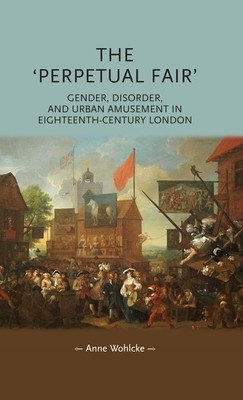
- We will send in 10–14 business days.
- Author: Anne Wohlcke
- Publisher: Manchester University Press
- ISBN-10: 1784992879
- ISBN-13: 9781784992873
- Format: 14 x 21.6 x 1.5 cm, minkšti viršeliai
- Language: English
- SAVE -10% with code: EXTRA
Reviews
Description
Each summer, a 'perpetual fair' plagued eighteenth-century London, a city in transition overrun by a burgeoning population. City officials attempted to control disorderly urban amusement according to their own gendered understandings of order and morality. Frequently derided as locations of dangerous femininity disrupting masculine commerce, fairs withstood regulation attempts. They were important in the lives of ordinary Londoners as sites of women's work, sociability, and local and national identity formation.
Rarely studied as vital to London's modernisation, urban fairs were a microcosm of London's transforming society, demonstrating how metropolitan changes were popularly contested. This study contributes to our understanding of popular culture and modernisation in Britain during the formative years of its global empire. Drawing on legal records, popular literature, visual representations, and newspapers, this study places official discourse regarding urban amusement into the context of broader cultural understandings of gender and social hierarchies, commerce, public morality, and the urban environment. Entertainments, such as theatre, waxwork displays, and 'monsters' are examined as cultural representations that disseminated ideas about 'Britishness' and empire to a diverse audience. Such entertainment is often overlooked in works focused on elite culture or exhibits in the later era of World's Fairs. This book demonstrates a thriving world of exhibition in the eighteenth century, whichis a vital component to understanding later expositions. Fascinating examples drawn from literary and visual culture make this an engaging study for scholars and students of late Stuart and early Georgian Britain, urban and gender history, World's Fairs and cultural studies.
EXTRA 10 % discount with code: EXTRA
The promotion ends in 22d.12:54:00
The discount code is valid when purchasing from 10 €. Discounts do not stack.
- Author: Anne Wohlcke
- Publisher: Manchester University Press
- ISBN-10: 1784992879
- ISBN-13: 9781784992873
- Format: 14 x 21.6 x 1.5 cm, minkšti viršeliai
- Language: English English
Each summer, a 'perpetual fair' plagued eighteenth-century London, a city in transition overrun by a burgeoning population. City officials attempted to control disorderly urban amusement according to their own gendered understandings of order and morality. Frequently derided as locations of dangerous femininity disrupting masculine commerce, fairs withstood regulation attempts. They were important in the lives of ordinary Londoners as sites of women's work, sociability, and local and national identity formation.
Rarely studied as vital to London's modernisation, urban fairs were a microcosm of London's transforming society, demonstrating how metropolitan changes were popularly contested. This study contributes to our understanding of popular culture and modernisation in Britain during the formative years of its global empire. Drawing on legal records, popular literature, visual representations, and newspapers, this study places official discourse regarding urban amusement into the context of broader cultural understandings of gender and social hierarchies, commerce, public morality, and the urban environment. Entertainments, such as theatre, waxwork displays, and 'monsters' are examined as cultural representations that disseminated ideas about 'Britishness' and empire to a diverse audience. Such entertainment is often overlooked in works focused on elite culture or exhibits in the later era of World's Fairs. This book demonstrates a thriving world of exhibition in the eighteenth century, whichis a vital component to understanding later expositions. Fascinating examples drawn from literary and visual culture make this an engaging study for scholars and students of late Stuart and early Georgian Britain, urban and gender history, World's Fairs and cultural studies.


Reviews